



Return to the presentation page
The cemetery of virtues
at the exit of the city of Dieppe in the department of Seine Maritime, Haute Normandie - France

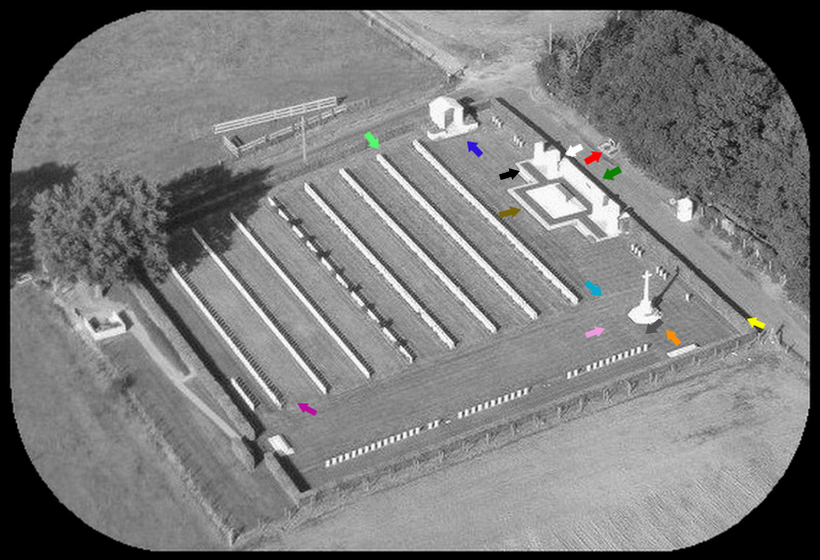
A total of 955 soldiers' graves are totaled in this collection site. By nationality, there are:
- Canada: 707
- United Kingdom: 232
- New Zealand: 4
- Australia: 3
- Poland: 2
- Indian: 1
783 soldiers buried in this place died during operation Jubilee on August 19, 1942 in Dieppe.
The first bodies were buried in 1942. However, the official completion of this cemetery as well as the placement of the stelae was effective in 1948.
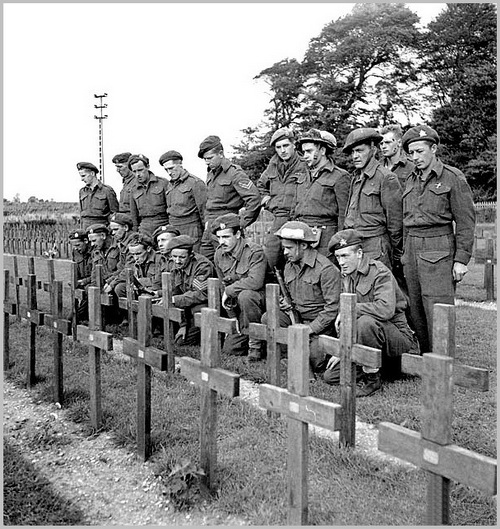

The rectangular cemetery of virtues is surrounded by a hedge as a whole, apart from the entrance or erected to mark the access, two pillars made of white stones about two meters high. In the continuity of the left pillar of the entrance and and extending for about ten meters is a low wall of white stones where appears, engraved in relief, the inscription in 2 languages (French - English) "Canadian military cemetery from Dieppe. "
Opposite the entrance to the cemetery, on the other side of the traffic lane, you can see a flower bed with a vertical slab or a plaque dedicated by l'Essex Scottish Canada is affixed to the memory of fallen comrades in combat.
The interior of this enclosure consists of a ground covered with meticulously maintained lawn or are arranged by strictly rectilinear rows the graves of the soldiers, of the large stone Altar bearing the inscription "Their name liveth for evermore", of an imposing stone cemetery cross and a small funeral chapel in which a chest, excavated in the front wall, contains the death registers and a notebook available to visitors.
On the interior walls respectively to the left and to the right of the chapel are sealed two engraved plates and arranged opposite. The plaque fixed on the left wall bears the following inscription in French : "1939-1945. The land in this cemetery was donated by the French people so that the remains of sailors and soldiers could rest there forever. and airmen in whose memory honor is given here ".
The plaque fixed on the right wall carries the English translation.
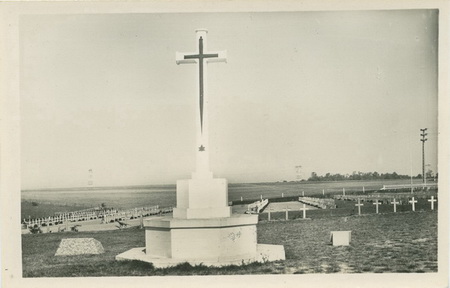
On the left a view dating from the early 1950s and on the right a view taken on August 19, 2012.
More than sixty years separate these 2 shots.
The photograph on the left dates from the 1950s and does not show the cemetery cross in exactly the same place as on the photograph on the right dating from 2012
It is very likely that this cemetery cross was originally located behind the row of tombs that can be seen upstream.
In addition, during its displacement, it changed orientation because the black sword, fixed on the upper part of the cross, is now visible on the other side.
This photograph indicates approximately its original position by a blue cross.
All the stelae arranged in this cemetery are ordered in perfectly symmetrical rows, back to back. This characteristic is specific to the Germans who were the first to carry out burials from 1942. In order to identify each buried soldier perfectly, at least for all those who may have been buried, each stele bears the soldier's surname on the stone , the dates, the rank, the regiment to which he belonged as well as its emblem, a characteristic religious sign revealing the religious affiliation (Cross, Star of David, Broken Arc).

On the left a picture taken in the early 1950s and on the right the same place on August 19, 2012.
Sixty years separate these 2 shots.
The Virtues military cemetery is a place of remembrance of the Jubilee operation of August 19, 1942. Each year, commemorative ceremonies are held there, allowing one to solemnly remember.
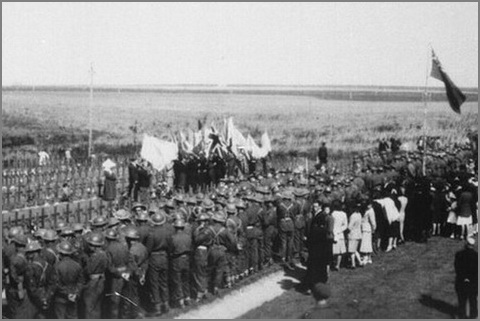
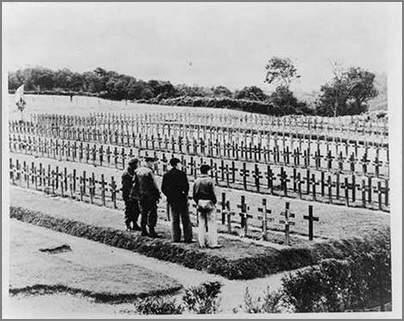
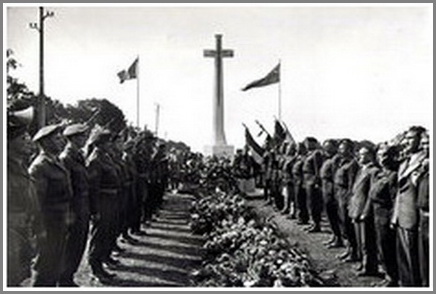

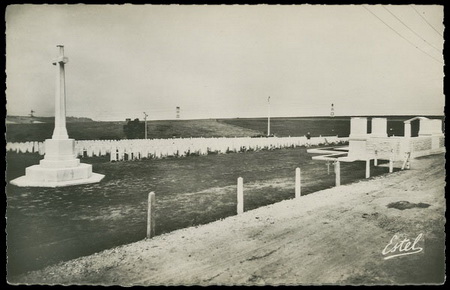
On the left a picture taken in the early 1950s and on the right the same place on August 19, 2012.
These two photographs are separated by around sixty years.
The cemetery cross is on its final location.







